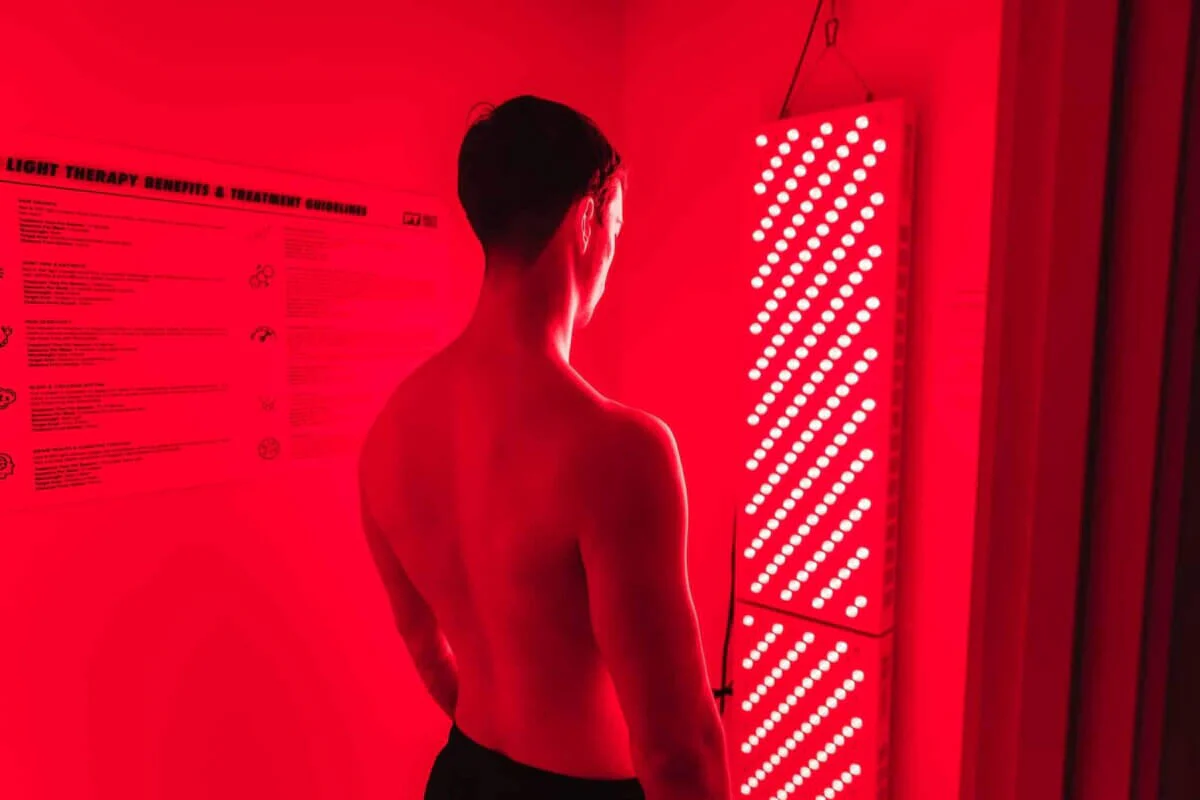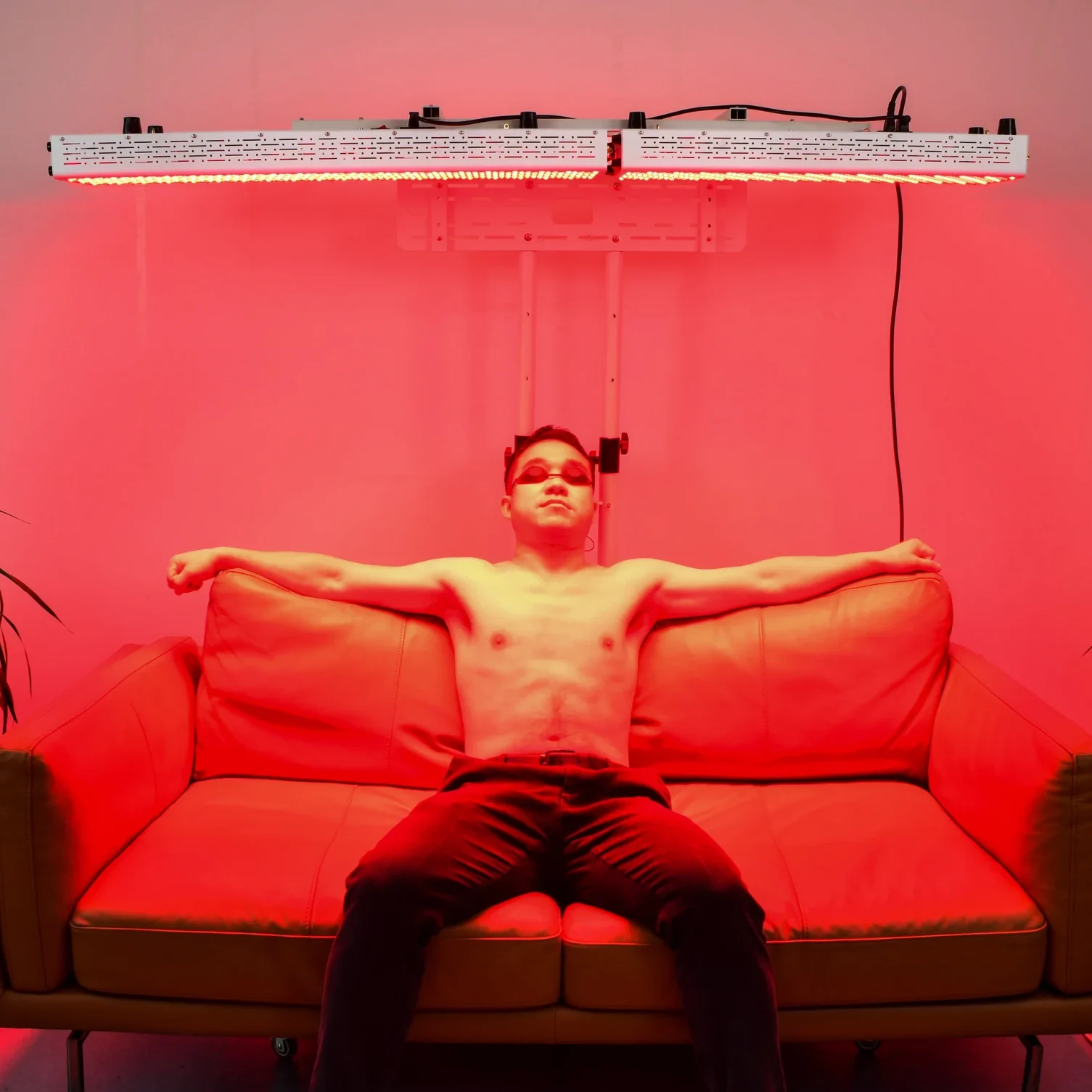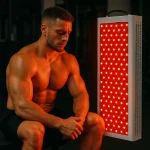Sustainability

Red Light Therapy Experience
Red light therapy is a painless and relaxing treatment that lasts 10-15 minutes. During the session, you'll be placed in a private room equipped with red light panels, where you'll stand between them. A trained specialist will answer any questions, turn on the red light therapy device, and then leave to provide privacy. Clients typically undress to maximize light absorption. During the session, you'll experience the warmth of the light. We recommend that clients avoid looking directly into the light. If you have light-sensitive eyes, you can choose to wear your own sunglasses or use the goggles we provide. Regardless of your sensitivity, we encourage clients to close their eyes, relax, and enjoy the light!

How does red light therapy work?
Red light therapy uses low-intensity red and near-infrared light to energize your cells, promoting healing and energy replenishment. The low-wavelength light produced by our red light therapy devices is absorbed by your mitochondria, which are responsible for many important processes involved in your daily health, healing, and energy production. This relaxing treatment can help the body promote healing, boost energy levels, relieve minor pain and swelling, and balance your mood—all in just 10-15 minutes daily.
Environmental Sustainability

Advantages:
✅ Low Energy Consumption and Clean Energy Compatibility:
Red light therapy devices (such as LED light sources) consume very little energy and can be powered by renewable energy sources such as solar and wind power, making them suitable for use in remote areas or off-grid environments.
Compared to traditional pharmaceutical production (which is highly polluting and has a high carbon footprint), red light therapy produces no chemical waste.
✅ Long Lifespan and Recyclable Materials:
LED light sources have a lifespan of over 50,000 hours, reducing electronic waste.
Future devices may utilize biodegradable materials or modular designs for easy recycling (e.g., replaceable light modules).
✅ Reduced Medical Waste:
Non-invasive treatment eliminates the use of disposable medical supplies such as gauze and syringes.
Economic sustainability
Advantages:
✅ Long-term Cost-Effectiveness:
A one-time device investment allows for long-term use, making it more economical than the ongoing purchase of medications (such as antibiotics and anti-inflammatory drugs).
It can reduce the long-term care costs of chronic conditions (such as arthritis and diabetic foot ulcers).
✅ Medical Potential:
Low-cost, portable devices (such as red light therapy patches) can be deployed in low-income areas, reducing inequality in access to healthcare.
✅ Industrial Convergence Creates New Markets:
Combining with health technology (such as smart wearables) and the beauty industry (home beauty devices) can create a sustainable business model.


Social Sustainability
Advantages:
✅ Eliminates drug dependency and reduces antibiotic overuse:
Red light therapy can replace some antibiotics (for example, in treating skin infections), alleviating the global problem of drug resistance.
✅ Improves health equity:
Portable devices can be used in rural areas, in conflict-affected areas, or in special environments such as space missions.
✅ Patient Empowerment (Self-Care):
Home devices enable patients with chronic diseases to self-manage, reducing reliance on hospitals.
Irradiance and Energy in Red Light Therapy: Respecting Natural Laws
Irradiance and Energy in Red Light Therapy: Respecting Natural Laws
In red light therapy, concepts such as "more energy is better" or "higher dose is better" are pseudoscience. Numerous international studies have shown that excessively high energy intensities not only fail to achieve better results, but may also have adverse effects on biological tissue.
🔺1. Scientific Basis of Irradiance
International clinical studies have shown that 100 mW/cm² is the upper limit of safe irradiance for red light therapy. An irradiance of 30-50 mW/cm², close to the intensity of natural sunlight in the red/near-infrared wavelength range, maximizes stimulation of cell repair and biological responses. Irradiance within this range is most effective for skin and superficial tissues without causing overheating or cell damage.
🔺2. Deep Tissue Penetration in Red Light Therapy
While higher irradiances (e.g., 50-100 mW/cm²) effectively promote deep tissue penetration of near-infrared wavelengths, prolonged use can overburden tissues and lead to adverse reactions. According to research published in the journal Laser Therapy, lower intensities (10-50 mW/cm²) can enhance tissue repair through appropriate stimulation and are particularly suitable for treating the epidermis and superficial tissues.
🔺3. The Relationship between Photoaging and Irradiance
Scientific research indicates that when irradiance exceeds 100 mW/cm², the effects of red light therapy not only plateau, but may actually trigger skin photoaging. This is related to mechanisms such as increased skin surface temperature and collagen degradation.
🔺4. Practical Usage Recommendations
Based on the above research, the optimal red light irradiance range should be 10-50 mW/cm². For daily anti-aging and health care treatments, it is recommended to maintain an irradiance of no more than 50 mW/cm². For deep tissue treatments, an irradiance of 50-100 mW/cm² is acceptable, but exposure time must still be controlled.
🔺5. Adjusting Irradiation Distance
Scientific research indicates that the effectiveness of red light therapy is closely related to exposure distance. During daily treatment, it's recommended to maintain a distance of at least 60 cm from the red light device for high-power devices to ensure the irradiance remains within a safe range. For joint pain or muscle soreness, the distance can be shortened, but prolonged exposure to the device is not recommended.
Conclusion:
Red light therapy should respect natural laws and properly control irradiance and duration. An irradiance of 30-50 mW/cm² is widely considered the optimal therapeutic range, while 100 mW/cm² is the upper limit of safety. Only by adhering to scientific evidence and properly adjusting irradiance and exposure distance can the therapeutic benefits of red light therapy be maximized while minimizing potential negative side effects.
